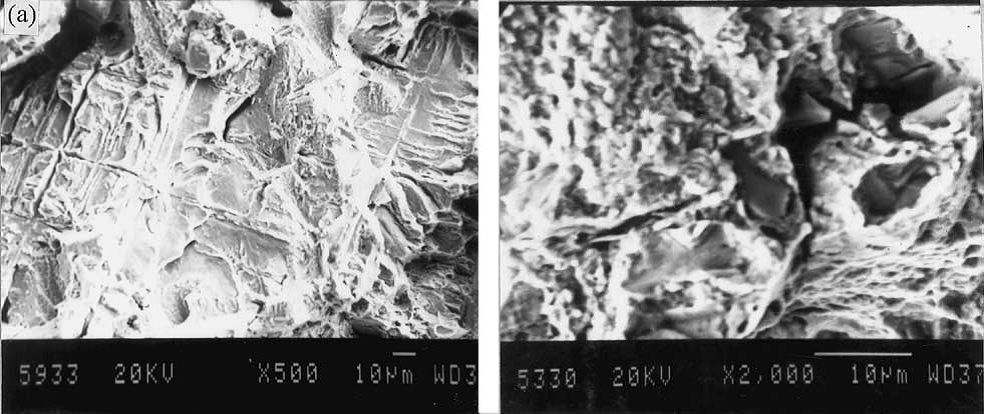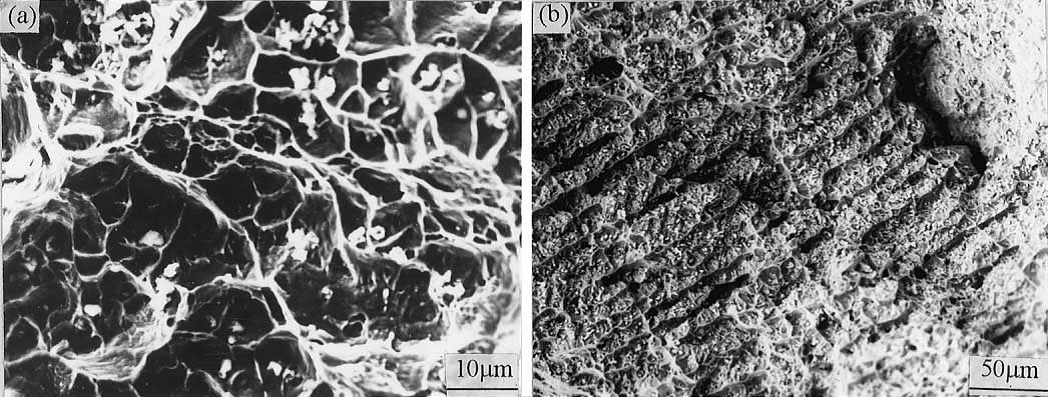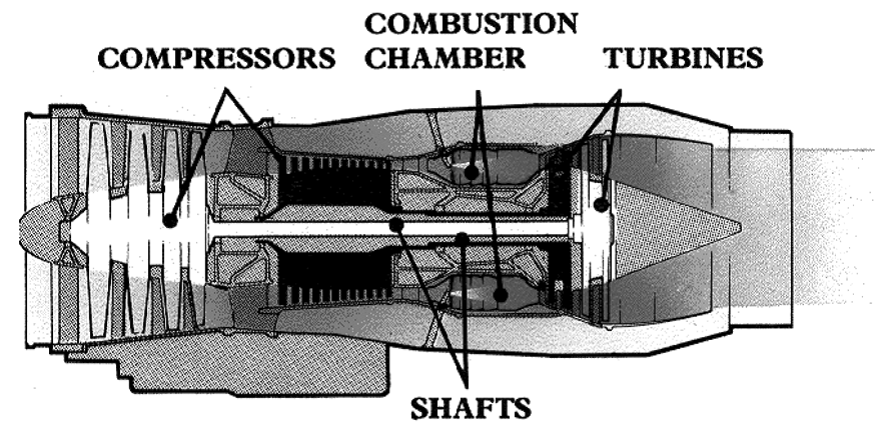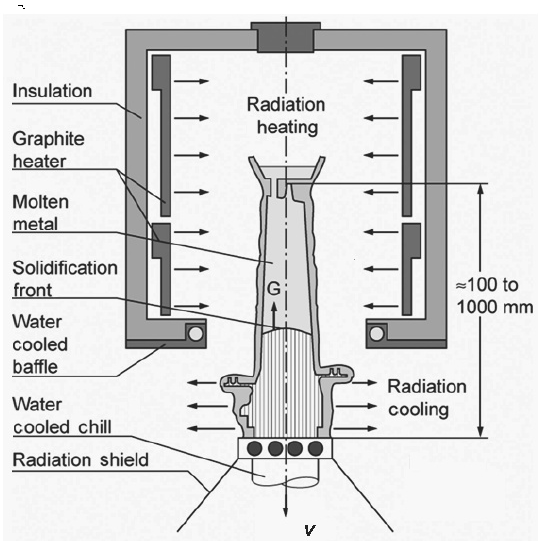Introduction
Super alloy materials are a phenomenon in engineering. These materials form excellent creep resistance and properties that are maintained with varying temperatures and operating conditions. Mechanical characteristics such as toughness and chemical behavior are well maintained at these temperatures rendering them efficient in satisfying industry needs.
Both mechanical and chemical properties indicate the crystalline structure and nature of these materials and their behavior to different forces. Creep is one of the properties that are improved with super alloys. A table of some of the super alloys in use today provides the microscopic behavior of some super alloys as detailed below.
Literature Review
High strength super alloys are characterized by excellent creep resistance when working and operating at high temperatures, excellent mechanical properties such as resistance to breakages, high tensile strengths, excellent malleability at all working temperatures, good surface stability, toughness, and other properties that are characterized by high oxidation and corrosion resistance (Furrer & Fecht, 1999).
Kirkaldy and Feldman (1991) argue that super alloys are formed from bases compounds such as Nickel-iron. A detailed analysis of super alloys shows that these materials are chemically characterized by face centered cubic arrangements with a crystalline nature.
Super alloying was a field whose development was driven by technical demands in the aerospace industry, marine turbine industry, gas turbines, and power industries. In addition to that, chemical and process innovations have over time played a key role in the development of super alloys (Furrer & Fecht, 1999).
These industries use technical devices that operate against high forces which tend to deform materials used for their construction. In addition to that, lateral forces that act on these devices, tensile strains, corrosion resulting from chemical reactions in the process were some of the demands that led to the development of super alloys. When fuels undergo combustion to release energy, endothermic reactions take place resulting in the release of large amounts of energy in the process.
In addition to that, high temperatures are achieved in the process creating a catalytic environment for chemical reactions to take place. These reactions result in corrosion and deformation forces acting on the power transmission system. These forces have to be overcome constructively while resistance to corrosion should be inhibited. These materials possess excellent corrosion resistance abilities suiting them for such environments.
A discussion into the chemical and process developments of super alloys could afford information on the chemical compositions of super alloys, and the effects of the historical development on the operating characteristics particularly the operating temperatures of these materials and their improvements with time.
Chemical Developments
When material operates at high temperatures, their creep values are considerably manipulated by exposure to heat. For super alloys, the crystalline nature of these materials may be dislocated causing the material to succumb to forces acting against it. Different super alloys have different behavioral characteristics to deforming forces that act on them. One specific example is Ni-base super alloy (Furrer & Fecht, 1999).
To effectively prevent dislocation at different operating temperatures, the material incorporates the element of gamma prime phase whose chemical composition is defined by the chemical equation here stated as Ni3 (Al, Ti) while acting as a precipitate strengthener for the alloyed material.
Titanium and aluminum are additive materials known to cause gamma prime phase condition in super alloys. The hardening process with heat treatment in a carefully controlled environment leads to controlled precipitation of the end material (Furrer & Fecht, 1999).
Super alloys are heat treated to enhance their mechanical and physical properties through the primary and secondary processes to separate the distance between constituent particles. Metalloids and nonmetals are treated as described above. However, it is worth noting that base alloys particularly those for cobalt do not undergo gamma prime the secondary strengthening phase (Furrer & Fecht, 1999).
Process development
The development of super alloys has had its focus on maintaining a material’s properties when subjected to very high operating temperatures. Such properties as strength, malleability, ductility, brittleness, hardness, toughness and a host of other properties were the driving forces behind the development of super alloys.
Early forms of super alloys were based on iron and its variant materials. However further developments to improve the operating temperature of super alloys led to their developments with cobalt acting as the base metal. Subsequent developments were based on vacuum melting, directional solidifications and other techniques specific to materials such as single crystalline super alloys.
However, in the recent past, different super alloys have been created due to industry and operating demands on the technical requirements placed on these materials for a number of reasons such as weight factors, higher operating temperatures, pressures not achieved before, bending and rupturing forces, and corrosion resistance among other characteristics (,Solomon & Devine, 1983).
Different super alloys exhibit different properties when operating at different temperatures and conditions. Thus they have specific areas of applications characterized by their properties as discussed hereafter. Turbine blades are made of single crystalline structures columns that are polymeric.
These blades can be casted on ceramic moulds. In addition to that, directional modification techniques create blades that are characterized by parallel running grains against stress acting lines (Christian, 1985). Directional modifications can also be used to create single crystalline super alloys characterized by lack of grain boundaries. Grain boundaries are an important element that determines the mechanical properties of a super alloy material.
Super alloys metallurgy
Nickel based super alloys are characterized by a gamma matrix that is specific to intermettalic γ’ precipitations whose structure is defined by precipitation strengthening. On the other hand, the γ-phase’s crystalline structure follow that of a face centered lattice structure composed of a variety of atoms that are randomly distributed within the crystalline material.
On the other hand, the lattice LI2 characterizes the ordered structure of the y’-phase classification materials. In aluminum alloy, Ni3Al is a sublattice consisting of atoms that are vertically arranged in its overall structure. However, the lattice structure consists of some gaps.
The y-stress anomaly is a technique for hardening the y’-phase alloy in creating an anti-phase boundary (Kirkaldy & Feldman, 1991). The boundary thus created reduces temperatures considerably by reducing the free energy that may be caused by the anti-phase boundary. Other additional benefits that result from super alloy materials are their ability to maintain their properties at high temperatures in the range of 1000 degree centigrade.
The grain boundary formed in the process of improving mechanical properties of super alloys includes improved toughness, creep strength, resistance to sliding, high resistance to fractures, and rupture strengths. Super alloy properties can be optimized by incorporating other elements in the design of these materials. The following table illustrates super alloy composition elements to enhance their properties (Kirkaldy & Feldman, 1991).
From: Hot Working Superalloys, 1999
Mechanical property tests for super alloys

Brittle and combined fractures, Source: Hot Working Super alloys, 1999

Tenacious dense and Cleavage steps Source: Hot Working Super alloys, 1999
The above illustrations indicate the microscopic behavior materials when subjected to various forces such as brittle fractures, and tensile fractures (Furrer, & Fecht, 1999).
Application
High strength super alloys enjoy an exponential lead in industrial applications resulting from a combination of excellent mechanical and chemical properties at industry levels to suit industrial applications. Kirkaldy and Feldman (1991) argue that to upscale turbine generation capacity, high strength nickel based alloys are used to optimize turbine output efficiency.
Turbines incorporated in the design of compression blades thus keeping the inlet air temperature tolerably at 45ºF in thermal storage systems, high pressure fogging, evaporative coolers, and inlet air chillers.
Turbines are an integral component of jet propulsion technology. Illustrated below is a turbine demonstrating inflow and outflow of air for energy production. Turbine blades experience lateral and tensile forces exerted by high velocity gases. High strength super alloys play a critical role in overcoming these forces for efficient operation of the turbine engine (Kirkaldy & Feldman, 1991).

Source: Hot Working Superalloys, 1999
Corrosion resistance is optimized in marine engineering where high strength materials are meet wide applications from the design and construction of the components parts of the internal combustion such as poppet valves.
Alloys such as Nimonic 80A find wide applications in valve constructions specifically emphasizing on corrosion and wear resistance. In addition to that, military aircrafts demand higher operational efficiency in delivering load to the target destination against operating conditions and speeds that demand efficiency.
High strength alloys find wide application in these areas. Space travel lays harsh penalties on various components used to construct spacecrafts. Resistance to high temperatures, corrosion, radioactive bombardments from the naked sun, and other harsh operating conditions lay emphasis on the use of high strength alloys for spacecraft constructions (Kirkaldy & Feldman, 1991).

Source: Heat Teach
Example of high strength super alloy application, vacuum cooler
Conclusion
High strength super alloys are materials that have experienced exponential growth in their usage and growth in a variety of industries. These materials are characterized by superior working properties and provide superior performance capabilities when subjected to different working conditions such as temperatures, forces, and forces. More detailed research need to be done along these lines to provide improved materials in terms of weight and working conditions.
References
Christian, J.W., 1985. “Military Transformations: An Introductory Survey. In Perspectives in Ferrous Metallurgy”, T. Bell, ed., Pergamon Press, Oxford, UK, pp. 73-91.
Furrer, D. & Fecht H., 1999. “Ni-Based Superalloys for Turbine Discs”. Journal of Metals. Springer, New York. 51, pp 15-18.
Kirkaldy, J.S. & Feldman, S.E., 1991. “Heat Teach: An Annotated Computer Program for Instruction and Prediction in Low Alloy Steel Heat Treatment”, Minitech Limited, Hamilton, Canada.
Solomon, H.D. & Devine, T.M., 1983. “Duplex Stainless Steels–A Tale of Two Phases. in Duplex Stainless Steels”, R.A. Lula, ed., ASM, Metals Park, OH, pp. 693-756.